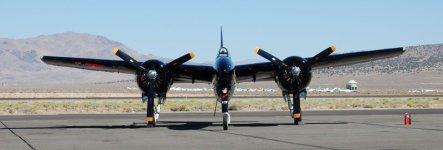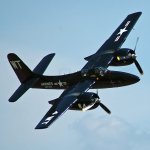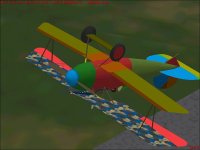aleatorylamp
Charter Member
Hello Ivan,
Interesting, all these experiments!
Acting on selected aircraft elements, and not on the entire build is of course better.
In my case I would have to take the wheels out of the build and stretch everything else.
For them it is obviously better to be moved into position after that - undeformed!
Of course, your program managed to cope with the offsets very well indeed!
But, in my case, I find calculating the offset corrections a bit taxing, and even worse,
writing it into the program, so instead, I find it better to work on the wheels in AF99,
although not by trying to adjust the existing ones. The same goes for textures - it will be
easier for me to let AF99 do that, even if I have to go through all the building list.
Adjusting wheel templates in AF99, both in the Parts Shop AND moving them back into
position in the Paint/Special Effects Shop didn´t work. They refused to stay where I
put them, despite saving the build before compiling, so I had to rename the templates
and structures after correcting them, and pack the build again.
That was the only thing that worked.
After that, of course, it worked OK when they were included in the stretching business,
even though this is arguably not a good idea. It was just part of the experiment.
For future versions of the AFX modifier, the AFX will not apply Stretching to wheels, only
Moving. ...Hopefully.
By the way, to stretch the fuselage, I suppose the wings were included, as the
fore/aft measurement change so as not to include the nose-cannon would also
have affected the wings on the drawing/plan.
Updated paragraph: I still have to experiment on the change in wingspan, which
should be 0.6 ft greater. This turns out to require a multiplier of 1.0191, the same
as the fuselage. I expect it would have to include the fuselage too, and the tailplane,
as the dimensional change seems to be overall.
Cheers,
Aleatorylamp
Interesting, all these experiments!
Acting on selected aircraft elements, and not on the entire build is of course better.
In my case I would have to take the wheels out of the build and stretch everything else.
For them it is obviously better to be moved into position after that - undeformed!
Of course, your program managed to cope with the offsets very well indeed!
But, in my case, I find calculating the offset corrections a bit taxing, and even worse,
writing it into the program, so instead, I find it better to work on the wheels in AF99,
although not by trying to adjust the existing ones. The same goes for textures - it will be
easier for me to let AF99 do that, even if I have to go through all the building list.
Adjusting wheel templates in AF99, both in the Parts Shop AND moving them back into
position in the Paint/Special Effects Shop didn´t work. They refused to stay where I
put them, despite saving the build before compiling, so I had to rename the templates
and structures after correcting them, and pack the build again.
That was the only thing that worked.
After that, of course, it worked OK when they were included in the stretching business,
even though this is arguably not a good idea. It was just part of the experiment.
For future versions of the AFX modifier, the AFX will not apply Stretching to wheels, only
Moving. ...Hopefully.
By the way, to stretch the fuselage, I suppose the wings were included, as the
fore/aft measurement change so as not to include the nose-cannon would also
have affected the wings on the drawing/plan.
Updated paragraph: I still have to experiment on the change in wingspan, which
should be 0.6 ft greater. This turns out to require a multiplier of 1.0191, the same
as the fuselage. I expect it would have to include the fuselage too, and the tailplane,
as the dimensional change seems to be overall.
Cheers,
Aleatorylamp
Last edited:
















 Merry Christmas to all!
Merry Christmas to all!



